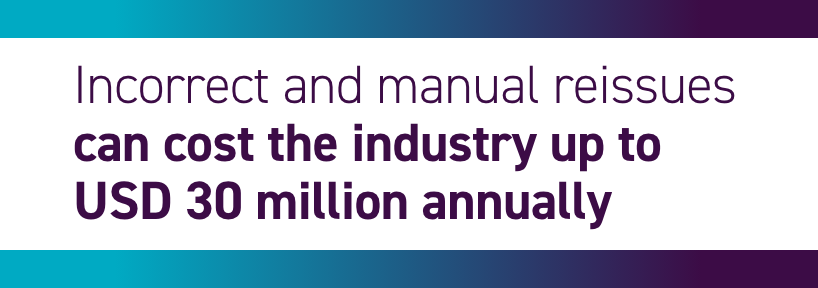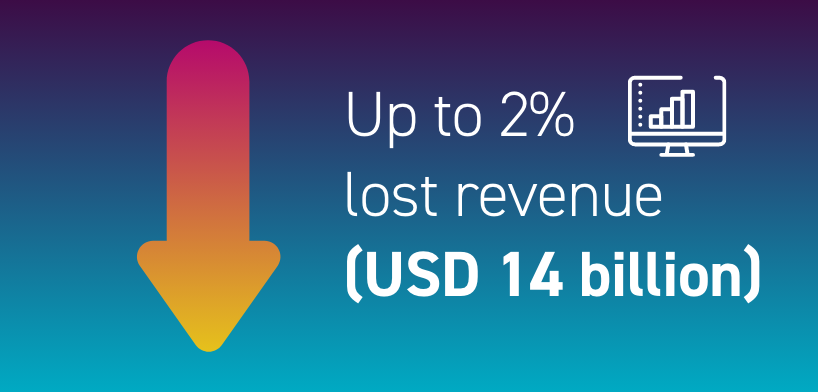
Airlines realize that the ability to create the right offer at the right price at the right time can dramatically improve the shopping experience for consumers. Travelers get a better, more relevant experience, with more flight options and benefits tailored to them. Airlines can create offers where customers buy higher yielding products, and they can also drive down customer conversion costs. It’s a win-win. The need for airlines to move away from static fare filing towards dynamic offers (which are offers that are created as people shop for flights) has never been more clear.
However, a funny thing happens after someone purchases a dynamically-created fare—there’s no data to support anything that might happen after the sale, like a request for a refund. Many downstream post-purchasing processes require fare and rule conditions, such as reissues or refunds, and often this information for dynamic offers isn’t available without workarounds.
What’s more, without accurate order information in fare and revenue management systems, decisions around price, forecasting, and optimization become less accurate and threaten to propose the wrong offer and price recommendations to the customer. All of this creates a sub-par industry and lower quality service for travelers.
Incomplete information feeding these downline systems can result in airlines losing millions of dollars annually when dynamic offers is used at scale. In fact, ATPCO, using a combination of publicly available data, industry data, and educated financial assumptions, estimates:
- a potential loss of more than USD 30 million in servicing (reissue calculation)
- revenue loss totaling up to USD 500 million in misallocated settlement values
- up to 2 percent in lost revenue opportunities (USD 14 billion) through imperfect competitive monitoring and fare management
Product details are a critical component for airlines looking to have more complete information during these downstream processes that occur after a fare is sold.
What goes wrong downstream with airline offers
Firstly, what exactly do we mean when we say downstream? It really just means the processes that happen after an offer (fare) is purchased–that’s when it becomes an order (ticket). Today these downline systems have been engineered to use the prefilled fares and rules to do their calculations.
The need for a solution to ensure these systems continue to function is clear. Why don’t we consider one very common scenario to illustrate the problem?
- An airline creates a dynamic offer and sells it to a traveler who then needs to change their flight.
- The traveler goes online to make the change, but the reissue system does not have the rules to process the change.
- The traveler then calls the airline and tries to make a change, but the airline reservation agent realizes it does not have the reissue rules, which makes servicing this request difficult and inaccurate.
 Repeat these issues many, many times over, and the gaps in servicing start to add up. Of the USD 700 billion airline industry sales, 18 percent is subject to servicing. Of that, it has been estimated that incorrect and manual reissues can cost the industry up to USD 30 million annually—but maybe more importantly, leaves potential for a customer dispute and a poor customer experience.
Repeat these issues many, many times over, and the gaps in servicing start to add up. Of the USD 700 billion airline industry sales, 18 percent is subject to servicing. Of that, it has been estimated that incorrect and manual reissues can cost the industry up to USD 30 million annually—but maybe more importantly, leaves potential for a customer dispute and a poor customer experience.
Inaccurate airline order data creates multiple issues
Unsaved granular terms and conditions of the order data also creates gaps during settlement. Current industry settlement rules are built on the concept of billing the appropriate portion of an applicable fare which is calculated based on pre-filed fares and conditions stored that were appropriate to the conditions of sale, not the original sold amount.
If even a small percentage of interline billings are using an applicable fare value, having inaccurate filed fares and posted orders creates inaccurate prorated revenue calculation and an increase in interline disputes.
 It’s a big problem where about USD 100 billion in revenue is generated through interlining, which is when airlines cross-sell each other’s products. Assume that in 10 percent of these interline transactions, the settlement is billed based on the applicable fare, and that not having access to posted orders creates a 5 percent error. It’s a potentially extremely costly lack of insight equating to USD 500 million lost to errors.
It’s a big problem where about USD 100 billion in revenue is generated through interlining, which is when airlines cross-sell each other’s products. Assume that in 10 percent of these interline transactions, the settlement is billed based on the applicable fare, and that not having access to posted orders creates a 5 percent error. It’s a potentially extremely costly lack of insight equating to USD 500 million lost to errors.
Inaccurate fare data decreases a competitive advantage
Airlines have built very sophisticated processes that understand the prices and products that are in the market. Without the inclusion of these prices and products in the airline fare management and yield management systems, the airline systems will generate inaccurate forecasts and price recommendations. This is compounded by the fact that airlines making the inaccurate reactions then impact all other airlines who are forced to react to these prices. This is very similar to what happens in other industries.
For example, if a gas station makes an error and sets the price of gasoline too low (below their costs), this results in an unsustainable position. This also impacts the nearby gas stations who are forced to lower their price to stay competitive.
 The lack of accurate price and conditions is proven to hurt revenue for the entire industry, to the tune of about USD 14 billion. What’s more, while individual airlines and travelers gain short-term advantages, once the race is over, airlines end up being unprofitable, which means that flight options and service suffers.
The lack of accurate price and conditions is proven to hurt revenue for the entire industry, to the tune of about USD 14 billion. What’s more, while individual airlines and travelers gain short-term advantages, once the race is over, airlines end up being unprofitable, which means that flight options and service suffers.
Focus on airline fare data
The best solution is for airlines to have a comprehensive set of airfares available across their systems. The industry is looking at solving this for dynamic offers with the transition to ONE Order, but it will take years for that to be in place at scale, and alternative solutions are needed to enable accurate servicing, support other downstream processes, and inform pricing and competitive decisions.
As many airlines move towards dynamic offers, it can be tempting to pull away from sharing and using the full set of fare data, but there are real near- and long-term consequences for doing so. The right solution not only improves accuracy for individual airlines, it preserves the market for the entire industry.
The good news is that with the help of the industry, solutions to solve this problem are emerging and dynamic pricing will in a few years be a welcomed reality.



